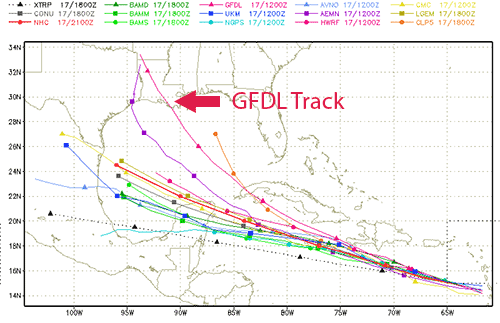August Was Hot (But You Already Knew That)
Saturday, September 1st, 2007August was a record-breaking month in Georgia. In Atlanta, the first 26 days of the month had high temperatures above 90 degrees, and there were nine days where the temperature went above 100, tying a record set in 1980 for the most days in a year with temperatures above 100 degrees. For the month, the average temperature was 85.6 degrees, 6.7 degrees above normal. The high temperature of 104, set on August 23rd, was not only the record-breaker for the day, but for the entire month. You would have to go back to 1980 to see temperatures this warm.
Here in Lawrenceville, the average temperature for August was only 81.3, and the warmest day was the 9th, when the temperature reached 101.5. That’s still warmer then normal. One reason the average temperature was cooler than in Atlanta is that on many days, the overnight low temperature stayed lower than in the city. I recorded six days with overnight lows less than 70, while Atlanta recorded none. In Gainesville, the average temperature was 84.6, 7.1 degrees above normal, and in Athens, the average was 85.2, 6.9 degrees above normal August temperatures in the Classic City.
Believe it or not, but the official precipitation records for August 2007 in Atlanta will show the city received 95% of its normal rainfall of 3.67 inches. 3.48 inches of rain was recorded at Hartsfield-Jackson Airport during the month, but over two inches of that occurred in the last four days of the month, and most of the rest during the last week. Because August rainfall is typically driven by thunderstorms, the amount of rain you got depended on where you were. I recorded a scant 1.52 inches during the month, while Athens recorded less than half its normal monthly total, with 1.72 inches. Gainesville had 3.17 inches of rain during August.
September is a month of rapid change climate-wise, as we begin to see shorter days and lower daytime and evening temperatures. This month, however, is likely to be warmer than normal, with the Climate Prediction Center calling for at least a 33% chance of a warm September, and an even greater likelihood of hot weather for the southeast corner of the state.
Things are busy in the tropics, by the way, with three active named storms. In the Eastern Pacific basin, Gil is beginning to lose strength, while Henriette is expected to gain strength, and eventually bring wet weather to the southwest US. In the Atlantic, Felix became a named storm this morning. He looks like he is going to follow roughly the same path as Dean did, but track slightly to the south.
Sphere: Related Content




